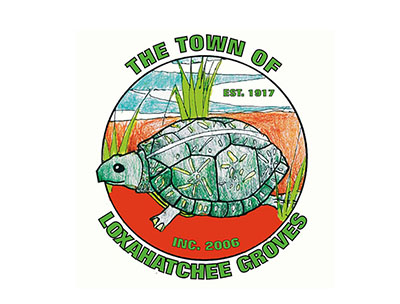A once-in-a-generation survey of the drainage system in the Town of Loxahatchee Groves is slated to get underway this year after the town was awarded a $350,000 grant through Resilient Florida designed to provide a more accurate look at the state of drainage infrastructure and make recommendations for improvements.
At a workshop meeting on Tuesday, June 20, the Loxahatchee Groves Town Council heard a presentation on the Resilient Florida grant from Town Manager Francine Ramaglia and engineering consultant Randy Wertepny of Keshavarz & Associates.
“This is a very important moment for us, three years in the making,” Ramaglia said. “Every year, we have applied to Resilient Florida, and this year, we received the money. We got $350,000.”
The project is part of a planning grant and will be used to update town systems that have not seen significant upgrades for more than 20 years. “This project will set us up for our future,” Ramaglia said.
The first part of the grant includes a survey of existing infrastructure, including canals, culverts, bridges and related stormwater management infrastructure throughout the town. That will be followed by a hydrological system analysis to model and evaluate the possible impacts of storm flooding and sea level rise on critical infrastructure, suggesting proposed improvements to enhance flood protection and resiliency.
The work will be led by Wertepny and the team at Keshavarz & Associates, with support from other firms.
“One of the biggest things that we are going to get right off the bat is an assessment of all your drainage infrastructure — bridges, culverts, canals, etc. We can use that for repair and replacement programs,” Wertepny said.
In 2021 and in 2022, Keshavarz & Associates applied for funding on behalf of the town through the Resilient Florida grant program for a townwide vulnerability assessment. In 2023, the Florida Department of Environmental Protection (FDEP) awarded the grant funding for the assessment, according to a report provided by Wertepny.
“Upon completion of the effort, the town will be positioned to transition management of its stormwater infrastructure to a more cost-efficient and technology-based approach,” he noted, adding that available topographic information and methods for acquisition have improved significantly in the two decades since the last such study was done in 2000.
The project timeline shows the survey beginning this fall and concluding in mid-2025.
A local match of between $70,000 and $127,000 is included in the proposal, but much of that is expected to be through in-kind labor and supplies. Grants from other agencies could help cover any out-of-pocket expenses. The $350,000, while awarded by the state, comes from federal sources.
Ramaglia noted that the project could be part of an ongoing effort to provide alternative means of drainage for the community, making it safer from flooding during major storm events. Now that the assessment process is getting underway, the town will begin to apply for construction grants to put into effect once the study is completed, she explained.
Getting the money will be easier once the plan is in place, Wertepny added.
“This report, once completed, can be used to help get additional funds for stormwater improvements,” he said, noting that the report will be helpful in negotiating drainage improvements with other agencies, such as the South Florida Water Management District.
After receiving the grant, Wertepny and the town turned in a detailed plan of action to the FDEP, which is currently reviewing the plan. Approval is expected this summer. The FDEP is requiring a local steering committee and outreach meetings as part of the process. “We are going to try to put together the best available committee to help guide this process,” Wertepny said.
Formal acceptance of the grant and approval of the project is expected at the council’s August meeting.
The end result will be detailed blueprints for the current system and suggestions for improvements. It includes modeling different types of storm events and predicting how the town’s critical infrastructure will respond.
“This will help solve a number of the problems that have existed for so many years in this town,” Councilwoman Marge Herzog said.
Also at the workshop, the council saw an overview of proposed capital projects for the upcoming fiscal year. There’s approximately $4 million in capital proposals, but all will not be funded with the money available. The council will need to prioritize them through the budget process.
Ramaglia suggested that the capital projects shift more to drainage issues from roads, which have dominated the town’s spending over the past several years. However, several council members said they did not want to eliminate the focus on road paving.
A suggestion was made to do canal bank repairs in-house rather than contract them out.
“We feel that we can do it efficiently over a period of time and save a significant amount of money,” Public Works Director Larry Peters said.
However, the council felt that other than emergency situations, canal bank work should wait until after Wertepny’s project is done.
“I don’t see going crazy on canal bank restoration until Randy is done with his study in 2025,” Vice Mayor Robert Shorr said.
He wanted more emphasis placed on culvert repairs and only repair canal banks as needed due to washouts.
“I like the idea of doing what we can in-house when we can,” Shorr said. “I don’t like the idea of taking three people and three pieces of equipment and tell them that for the entire year, your job is just to do this.”







